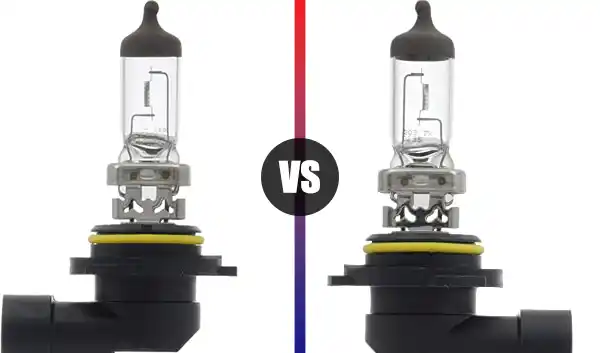Amber light is a color of light that we often see in various situations, including traffic lights, warning lights, and electronic devices. Despite its ubiquity, many people may not fully understand what amber light means or why it’s important to pay attention to it. In this blog post, we’ll explore the definition and significance of amber light, as well as some common examples of where you might encounter it.
No products found.
Definition of Amber Light

Amber light is a yellowish-orange color that is typically associated with traffic lights, warning lights, and other types of signals. It is also sometimes referred to as “yellow light” or “caution light”. In many countries, including the United States, amber lights are used as a warning signal on traffic lights to indicate that the signal is about to change from green to red. Amber lights are also used on emergency vehicles, construction sites, and other locations to indicate caution or potential danger. In some cases, amber lights may be used to indicate a specific type of warning, such as a low fuel warning on a vehicle or a warning light on an electronic device.
Amber Light in Traffic Signals
Amber light is an important aspect of traffic signals that are used in many countries around the world. Amber light is typically located in between green and red lights and is designed to signal to drivers that the light is about to change from green to red, or from red to green and warns drivers to slow down and prepare to stop.

Here are some common uses of amber light in traffic signals:
1. Warning Signal:
When the amber light appears, it is a warning signal that the green light is about to change to red. This gives drivers time to prepare to stop their vehicle safely, and also alerts pedestrians to start crossing the road before the light changes to red.
2. Safety
The use of amber light in traffic signals helps to promote road safety. It gives drivers enough time to react to the changing signal and stop their vehicle safely, reducing the risk of collisions or accidents at intersections.
3. Intersection Management
The amber light is also an important tool for managing intersections. It allows for a brief pause between green and red lights, helping to prevent collisions that could occur if the lights changed too quickly.
4. Traffic Flow
The use of amber light can help to improve the flow of traffic. By giving drivers time to prepare for the changing light, it can reduce congestion and prevent traffic backups at intersections.
5. Enforcement
The amber light can also be used as an enforcement tool by police officers. Drivers who fail to stop their vehicle when the amber light appears may be fined or penalized for disobeying traffic laws.
Overall, the use of amber light in traffic signals is an important aspect of road safety and traffic management. By understanding the meaning behind the amber light and following traffic laws, drivers can help to prevent accidents and ensure a safe and efficient flow of traffic.
Amber Light in Warning Lights

Beyond traffic signals, amber light is also commonly used in warning lights on vehicles, machinery, and other equipment to signal potential hazards or alert others to the presence of the vehicle or equipment. These warning lights are typically bright and conspicuous, making them easy to spot from a distance.
Here are some common examples of where you might encounter amber warning lights:
1. Emergency Vehicles
Ambulances, fire trucks, and police cars often use flashing amber lights in addition to their standard red and blue lights. The amber lights help to make the vehicle more visible and alert drivers to the presence of an emergency vehicle on the road.
2. Construction Equipment
On construction sites, you may see amber warning lights on equipment such as cranes, bulldozers, and excavators. These lights signal to workers and passersby that heavy machinery is in use and that they should exercise caution in the area.
3. Aviation Signals
At airports, amber warning lights are often used to signal to pilots and ground crew members that they should exercise caution when approaching or working near aircraft. These lights may be used to indicate that a plane is in motion or that there are other hazards on the runway.
4. Oversized Loads
Vehicles carrying oversized loads, such as wide loads or loads that exceed a certain height or weight limit, are often required to use amber warning lights. These lights signal to other drivers that the vehicle is oversized and may require additional space or caution when passing.
In each of these cases, amber warning lights play an important role in ensuring safety and preventing accidents. By being aware of these warning lights and what they indicate, drivers and pedestrians can take the necessary precautions to avoid potential hazards.
Amber Light in Electronic Devices

Amber light is commonly used in electronic devices to indicate various status messages or warnings. These lights can be found on a wide range of devices, from smartphones and laptops to home appliances and other electronic equipment.
Here are some common examples of where you might encounter amber indicator lights:
1. Battery Status
Many electronic devices use amber indicator lights to signal when the battery is low or needs to be charged. When the battery level drops below a certain threshold, the indicator light may switch from green to amber, indicating that the device needs to be charged soon.
2. Wi-Fi Status
On many routers and modems, an amber indicator light may be used to signal that the device is not currently connected to the internet. This can be helpful for troubleshooting connectivity issues and ensuring that the device is functioning properly.
3. Power Status
Some electronic devices use amber indicator lights to signal that the device is in a low-power or standby mode. This can be useful for conserving energy and extending battery life.
4. Error Messages
When an error occurs on an electronic device, an amber indicator light may be used to signal the error and prompt the user to take action. For example, if a printer encounters an error while printing, an amber indicator light may start flashing to indicate the problem.

Overall, amber indicator lights can be a helpful tool for providing feedback and alerts to users of electronic devices. By understanding the meaning behind these lights and how they are used, users can better navigate their devices and troubleshoot any issues that may arise.
Conclusion
In conclusion, amber light is an important and frequently encountered color of light that can convey a wide range of messages and warnings. By understanding the definition and significance of amber light, we can all become better equipped to navigate our world safely and effectively.






